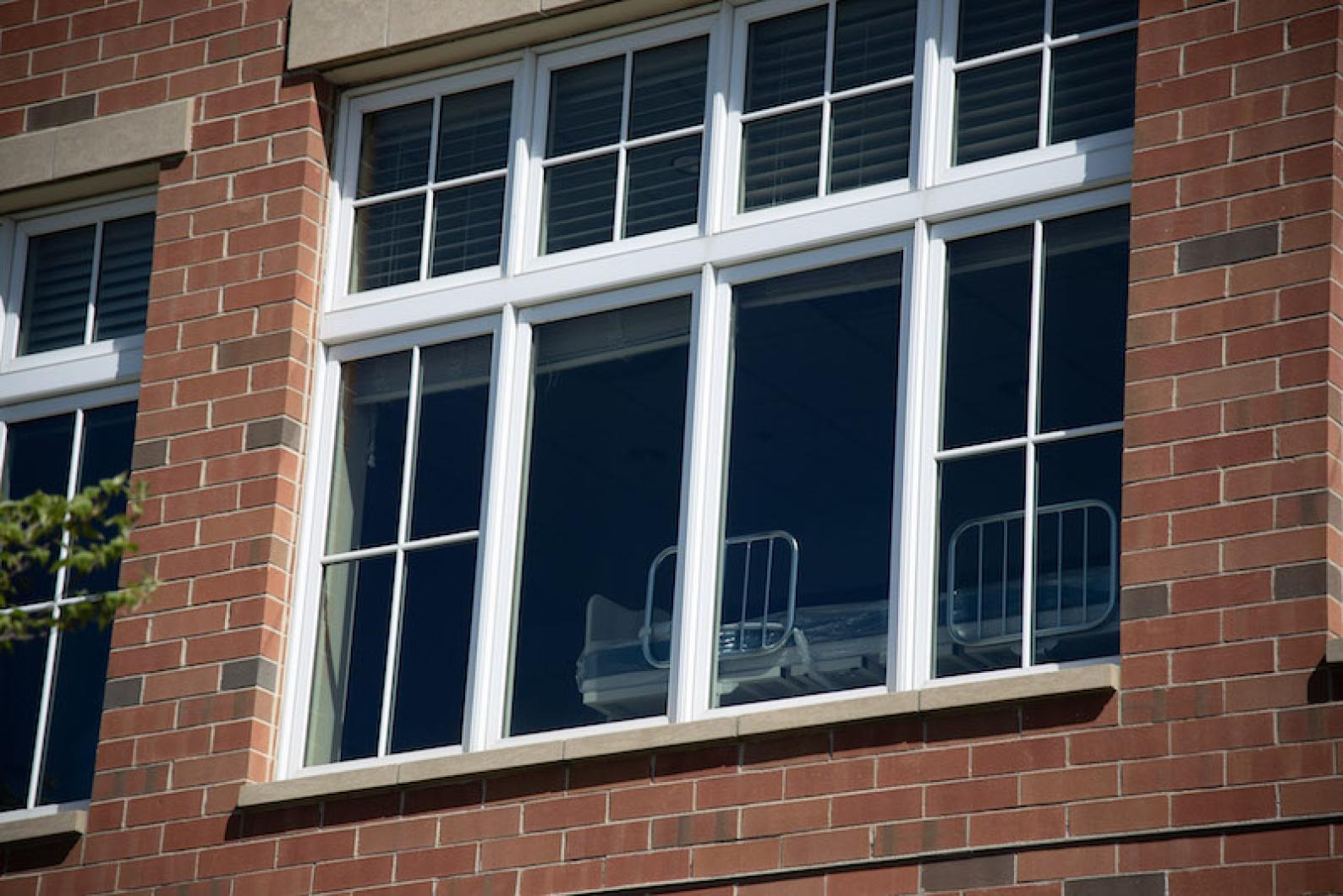The Martha’s Vineyard Hospital saw a slow Memorial Day weekend, but is reporting a recent uptick in non-Covid patients as it announces strict safety protocols to reopen the facility for the summer.
“We’re quieter than usual,” said Claire Seguin, hospital chief operating officer and head of nursing, at a news briefing Wednesday morning. “That being said, we’re definitely seeing an uptick in patient volume that typically comes around this time of year anyway, and we are ready for that.”
And while hospital leaders said summer staffing would be “adequate,” they left the door open for layoffs after June 30 and said some staff have been reassigned because of changing demand and hospital safety requirements.
The briefing was hosted by Ms. Seguin, hospital president and chief executive officer Denise Schepici and spokesman Katrina Delgadillo.
The hospital has been under a stringent lock-down since March 17, when it cancelled all elective surgeries and closed the building to the public because of the pandemic. A triage tent went up outside the emergency room entrance and the entire facility was transformed to segregate Covid-19 patients.
Approximately 30 patients on the Island have tested positive for the virus since the pandemic began, and more than 800 have been tested. Those numbers have remained steady for the past week, although hospital officials said the impacts of the pandemic would continue for the long-term.
“I don’t think it’s going away any time soon,” Ms. Seguin said. “It’s going to take months, not weeks, to get through this pandemic.”
With the first phase of the governor’s relaxed stay-at-home advisory in place, the hospital began its gradual re-opening process this week, reintroducing pediatric immunizations, mammograms, endoscopies and other forms of general surgery. Limited rehab services are planned to begin later in the month.
At the press briefing Wednesday, Ms. Seguin said the hospital performed six cancerous skin lesion removals on Tuesday and one other elective procedure.
“It went very well in the [operating room] yesterday,” she said.
Ms. Schepici outlined the strict safety precautions the hospital is taking as it gradually re-opens for routine medical services. Ms. Schepici described the protocols as the hospital’s “safe care promise,” saying that the three main safety measures were “clean,” “screen” and “protect.”
The protocols include removing fabric furniture and other sitting areas, and turning cars and parking lots into waiting rooms.
There will also be temperature and symptom screening for all out-patients and employees who enter the hospital for care, and all inpatients will be tested for the virus.
Part of the goal, Ms. Schepici and Ms. Seguin said, is ensuring that people who needed to come to the hospital felt safe and didn’t wait until the situation was dire — something Ms. Schepici described as “2 a.m. syndrome.”
“You worry that people are putting off their care, so that when people come to the hospital, they are really, really sick,” Ms. Seguin said. “I hope that people do come to the hospital before their needs are dire.”
The hospital has not laid off any staff since the pandemic hit, despite a severe decline in non-Covid related emergency room visits. Hospital officials have previously said that some staff have been reassigned.
On Wednesday leaders said the hospital, through its parent network Partners Healthcare, was able to keep staff who aren’t working on the payroll because of participation in a special program called “EML” that stacks vacation and paid leave time. She said the hospital’s commitment to keep staff on the payroll will continue through June 30.
“We have put more earned time and vacation time in people’s banks if they didn’t have them, so long as they were willing and flexible to take other jobs should we have to recall them,” Ms. Schepici said. “We may have to actually add positions, or reconfigure positions, to meet the new normal.”
She added:
“I’m not anticipating any layoffs, but that could change after June 30.”
Ms. Schepici also said summer staffing will be higher this season than in years past, but clarified after a question that the increase is primarily due to the onerous safety protocols now in place at the facility. The hospital needs more screeners, more housekeepers and other additional roles for facilitating new practices, like the extensive use of personal protective equipment, Ms. Seguin said.
“It takes more bodies to accomplish all of that,” Ms. Seguin said.
The staffing will be a combination of nursing staff, advanced practice providers and other employees in those roles, according to hospital officials.
Hospital officials said the relatively low case tally and nine-day lull in positive cases on the Island were good signs. They have taken down a tent for surge capacity that was built outside the facility, but said they were not letting their guard down.
“We’ve made alternative plans for capacity that are suitable for the numbers that we see,” Ms. Schepici said. “We can push a button and just close things down if we should see a major surge. But right now, we have been planning for the worst, and hoping for the best, and seeing the best right now. We hope that continues.”







Comments
Comment policy »